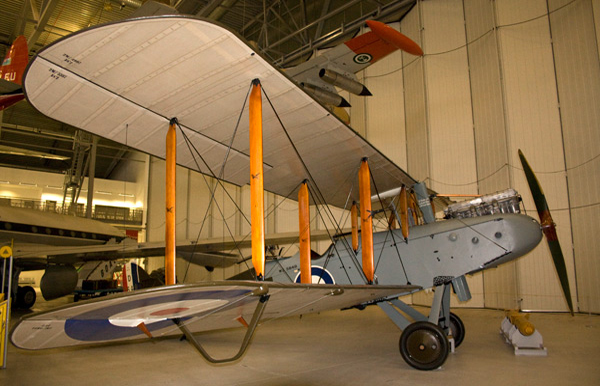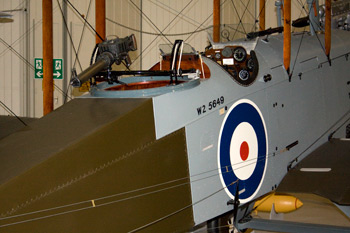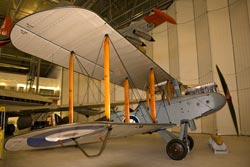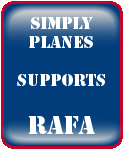de Havilland Airco DH.9

de Havilland Airco DH.9 D-5649 W2 5649. Photo by Ross Cannon
The Airco DH.9 designed by Geoffrey de Havilland for The Aircraft Manufacturing Company was first flown in July 1917. After the 1920s she was known as the de Havilland DH.9. This First World War British biplane bomber was a development of the Airco DH.4. The DH.9 was very popular with both The Royal Flying Corps and Royal Air Force with orders in the masses.
The DH.9 took heavy losses during World War I over the Western Front due to the engine's poor performance. A later version was developed (the DH.9A) which had a far more reliable and powerful American Liberty L-12 engine.

de Havilland Airco DH.9 D-5649 W2 5649
Photo Ross Cannon
The Airco DH.9 design kept the wings and tail-unit of the Airco DH.4. Retaining these elements of the DH.4 allowed for the pilot of the aircraft to sit closer to the gunner section, which meant that they were further away from the fuel tank and engine.
After the war DH.9s were used by air transport companies and also for other civilian use as they were cheap and also capable of carrying a reasonable load. Aircraft Transport and Travel operated some of the early air services between Amsterdam, London and Paris.
Surviving Examples

The Imperial War Museum Duxford houses the remains of an Airco DH.9 in the AirSpace Hangar that was discovered in India in 2000. (Shown left - photo Ross Cannon). The remains of two other aircraft were discovered in India too.
Airco DH.9 F1258 is on display at Musee de l'Air et de l'Espace, Le Bourget, Paris.
An Airco DH.9 is owned by The South African National War Museum.
Airco DH.9 G-EAQM is preserved in The Australian War Memorial, Canberra, Australia. G-EAQM was the first single-engined aircraft to fly from the United Kingdom to Australia.




